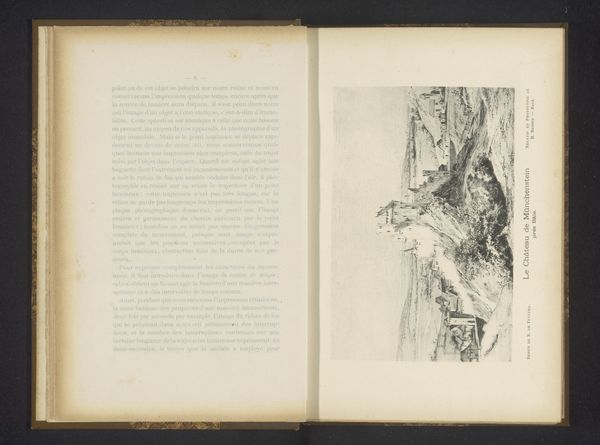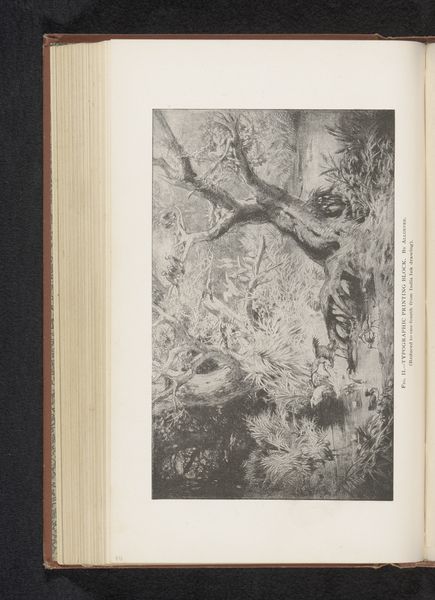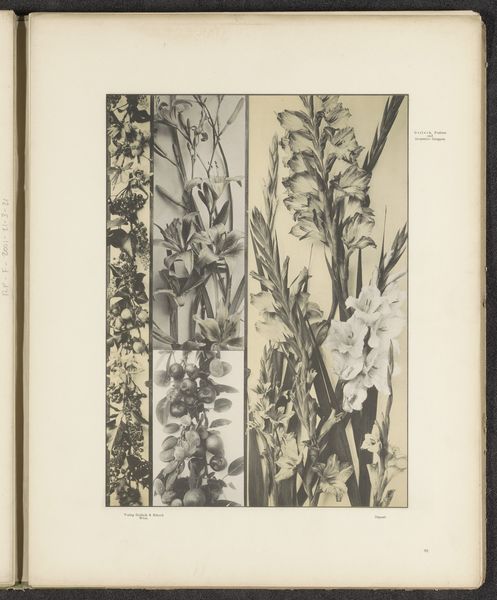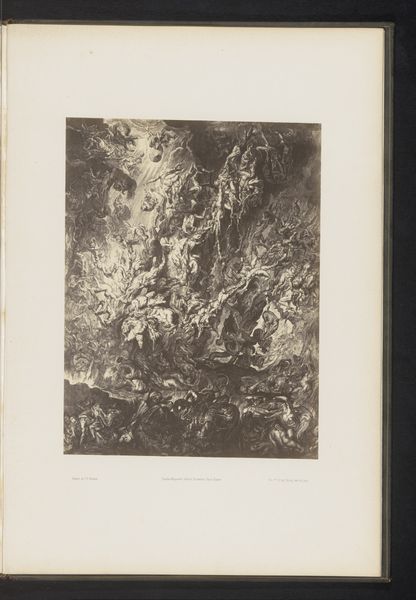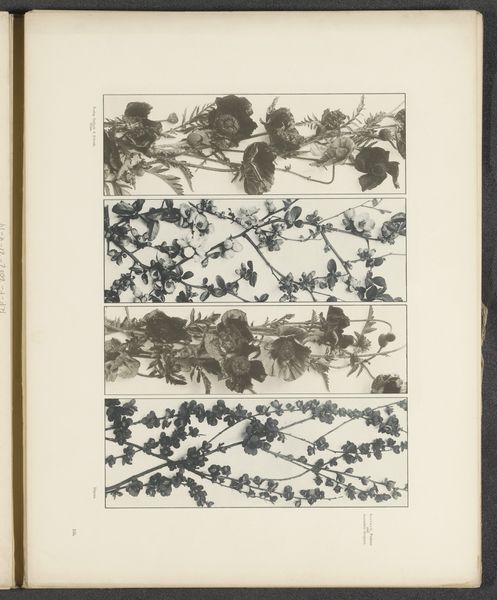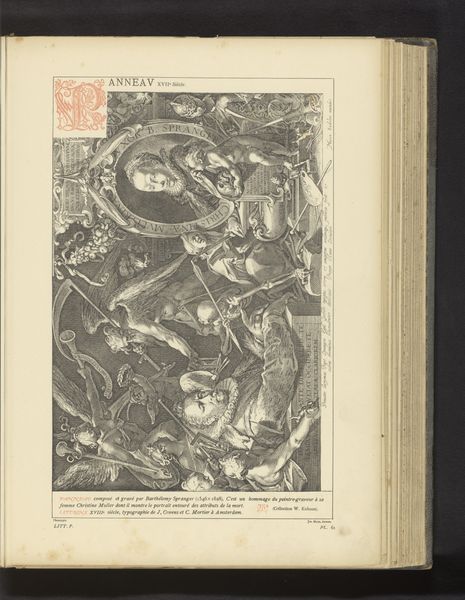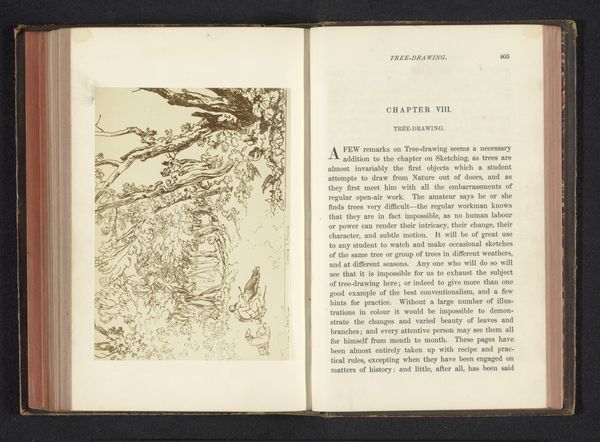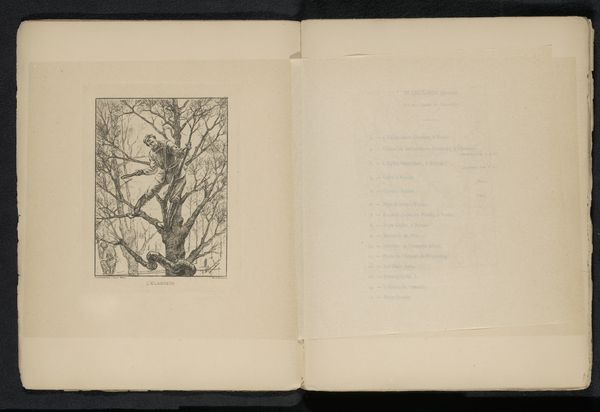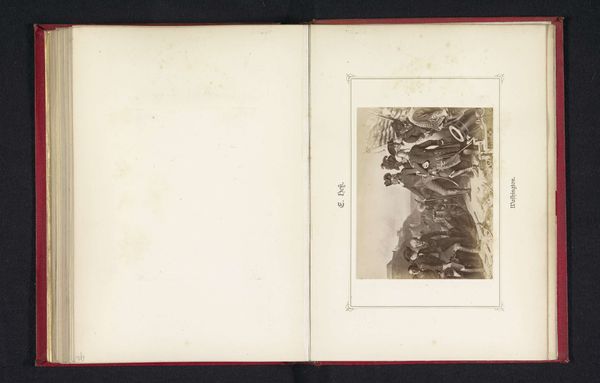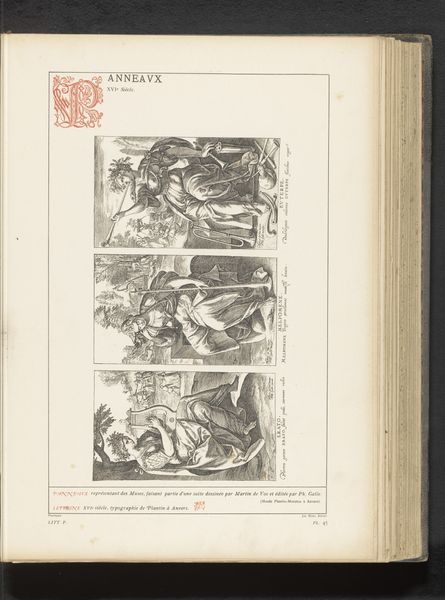
Reproductie van Verbeelding van het leven tijdens de Bronzen Eeuw, een prent door Hendrick Goltzius before 1881
0:00
0:00
Dimensions: height 344 mm, width 231 mm
Copyright: Rijks Museum: Open Domain
Curator: This print, "Reproductie van Verbeelding van het leven tijdens de Bronzen Eeuw," or "Reproduction of Imagination of Life During the Bronze Age", after Hendrick Goltzius, offers a glimpse into a bygone era, reproduced before 1881. Editor: It strikes me immediately as a vision of hardship. Look at the figures, caught in laborious acts amid a stark landscape—the composition seems almost burdened by their struggle. What do you see here materially? Curator: Goltzius, and in turn the reproducer, clearly aimed to capture not just an image of the Bronze Age, but to reflect on the very nature of societal progress through material engagement. Editor: The engraving seems almost industrial. Note the detail in the textures: the rocky terrain, the tools being wielded—each mark contributes to a sense of ceaseless work, etched permanently onto the paper. And that contrast highlights, no pun intended, the social stratification of labor in artistic printmaking. Curator: Absolutely, but more than that. The print embodies a growing fascination in the late 19th century with antiquity. Its circulation through prints like these contributed to forming public perception and engaging the contemporary academic trends in the period. Editor: The creation of such an intricate design itself involved significant physical labor, from the engraver’s hand to the press operator's—echoing the laborious activities depicted in the scene. What do you see about its relationship to other artworks, in how art makes commentary? Curator: This engraving connects to mannerism’s stylistic flourish, visible in the elongated figures and theatrical poses. By evoking antiquity through this style, the print subtly critiques modern society, framing its failings through an idealized or, perhaps, cautionary look at the past. It serves a political, social, and didactic role. Editor: Right, it’s this interaction of human effort, of turning raw materials—copper, ink, paper—into something of value, where art history moves into history itself. The whole enterprise relies on and represents labor: the people in it and the making of it! Curator: Precisely. The reproduction extends that dialogue, re-contextualizing and preserving the Bronze Age within the landscape of the late 19th century art market and scholarly engagement. Editor: Seeing art as something both of and about labor gives one a renewed insight on what's involved when viewing such pieces. Curator: Agreed. Considering both the hand of the artist and the culture they represent makes an exhibit experience ever richer.
Comments
No comments
Be the first to comment and join the conversation on the ultimate creative platform.
